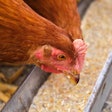
Today’s broiler is a very different bird to that of 50 years ago, with much improved genetics and far better productivity. Comparisons made between the genetic stocks of broilers from 2001 and 1957 clearly show that a predominant part of this improvement in growth potential is due to genetic selection.
Although we have also undoubtedly increased our understanding of the nutritional needs of broilers during this time, there is still room for further gains.
Protein is the key
A major part of the increased efficiency associated with genetic selection can be explained by an increase in birds’ appetite. The modern broiler consumes more feed, and reaches market body weight in significantly fewer days.
In addition to the live gain, there has also been a shift in the composition of gain, with breast meat yield increasing from 12 percent of body weight in 1957, to 20 percent in 2001. More recent data from breeders would suggest that today’s broiler is capable of producing 23 percent of its live body weight as breast meat.
The price we pay for these gains is the need to change the amount and composition of feed given to each bird. In particular, today’s broiler needs a bigger input of dietary protein (amino acids) and relatively less energy. This is partly because birds are ready for market in significantly fewer days, and thus consume less energy overall. The other reason is the increase in breast yield as a proportion of body weight, which increases the need for dietary amino acids.
Our production systems have reflected this change to some extent, but I believe that if we took an even closer look at what is happening at the nutritional level, then we could make even better gains.
Ideal protein
When you compare digestibility trials throughout the same 50 years, it is not possible to observe a big shift in the ability of these birds to absorb nutrients from their diets. In other words, they are simply eating more protein to fuel the gains.
As different tissues and metabolic patterns use different amino acids, it makes sense to look at the composition of breast meat protein. It would be logical to assume that the increased production of breast meat will require more input of the particular amino acids that are used to build it.
Lysine is known to be highly concentrated in muscular tissue compared with most other amino acids. This, in turn, suggests that relatively more lysine is now required in the diet compared with other amino acids.
In fact, French National Institute for Agricultural Research (INRA) data suggest that current published ideal protein estimates may need to be revised to take account of this understanding. It shows that about 10 percent more lysine is required to achieve optimal FCR rather than weight gain.
Perhaps it is time we reviewed and revised the amino acid/lysine ratios which are used as the basis for feed recommendations. By looking at feed composition at the individual amino acid level, it may be possible to unlock the full potential of the genetic gains that we have seen not only over the past 50 years but also in more recent years.
Continued improvement
Nutrition is a key area where we can learn more and achieve further gains, and by acting on this increased understanding, we ensure we produce meat as economically and as profitably as possible.















